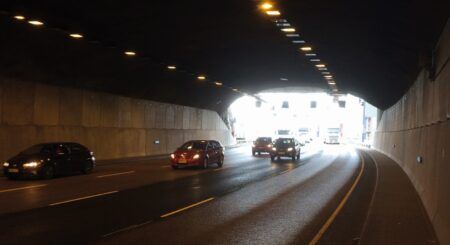Jeff Price, VP and GM, ITS, at Cubic Transportation Systems looks at the latest US road safety statistics, which are some of the worst on record. He highlights how technology, public-private partnerships and federal funding are new combining in an effort to make roads safer again.
There’s a growing crisis in transportation. According to the latest statistics from the US Department of Transportation, more than 30,000 people died on US roads in the first nine months of 2021. That’s about a 12% increase, compared to the first nine months of 2020. This is the highest number of transportation-related fatalities during the first three-quarters of the year since 2006 and the highest nine-month percentage increase in the history of data recorded by the Fatality Analysis Reporting System (FARS).
Even more shocking is the projected transportation-related fatalities during Q2 2021. FARS estimates 11,225 deaths for that time period, representing the highest Q2 fatalities since 1990 and the highest quarterly percentage change (23.1%) in the system’s data recorded history.
These numbers are a stark reminder of road safety and infrastructure improvement as key components of mobility’s future in the new year. However, this scenario will continue if we ignore solutions to predict road traffic and ease road congestion. In order to keep the traffic flow smooth and safe, municipalities must innovate their transit systems.
Smart technology is one solution. Cities can use computer vision to make intersections safer and more efficient for both vehicles and vulnerable road users like pedestrians and bicyclists. An advantage of computer vision is the ability to measure safety metrics, such as near collisions and unsafe driving. Those safety metrics will be used to identify locations that need improvements and to quantify the impact of those improvements after they are complete.
While new challenges may arise in traffic safety, the good news is that public-private partnerships are possible to create safer road travel. At the University of California San Diego, extensive traffic signal and mobility modernization efforts are underway at 26 intersections along five miles of roadway surrounding the campus. The university partnered with Linscott, Law, & Greenspan (LLG) Engineers and Cubic Transportation Systems to lay the groundwork for San Diego’s smart city future with adaptive traffic signal control and AI-enabled cameras to detect vehicles and pedestrians at intersections.
As transportation embraces digital transformation, cities will need to adopt intelligent transportation systems (ITS) technologies to fortify safety standards. As part of that tech ecosystem, applications equipped with automatic incident detection or stopped vehicle detection systems are available.
In addition, advanced applications exist that integrate live data and feedback from sources such as weather data. Cubic’s Gridsmart solution encompasses these types of capabilities. For instance, Gridsmart has counted and classified more than 442 billion vehicles around the world with unmatched accuracy in 49 US states and 29 countries.
Cities and regions are looking to rebuild networks, upskill personnel and improve services. Public transit improvements can also contribute to these upgrades, and in turn safer roads. The president’s infrastructure bill provides the opportunity for transit agencies to make those necessary investments.
In Maryland, the promise of the bill is beginning to unfold with a $22 million federal grant for Baltimore’s East-West Priority Corridor. The plan is to create 10 miles of dedicated bus lines, which will enhance accessibility for people with disabilities and on-time performance for buses. It will also upgrade the traffic signals at select intersections.
At the federal level, the USDOT is launching the National Roadway Safety Strategy. Its goal is to establish a comprehensive set of actions to reduce serious injuries and deaths. The initiative will be a joint effort among multiple stakeholders including various levels of government, advocates, engineers and communities.
The future of mobility requires cities and transit agencies to be more proactive about congestion and safety measures. A part of that approach will also demand a larger investment in funds to build high-tech networks. The time is now to make these commitments, which will protect our loved one as they travel. Simply put, safer roads equals more lives saved.
Author biography
Jeff Price is the VP and GM of ITS at Cubic, responsible for leading its ITS portfolio comprising the Gridsmart, Trafficware, and Umo IQ/Display product lines. Previously, he worked as part of the research and development staff at Oak Ridge National Laboratory. He earned an M.S. and Ph.D. in electrical engineering from Georgia Institute of Technology and a B.S. in electrical engineering from the United States Naval Academy.





